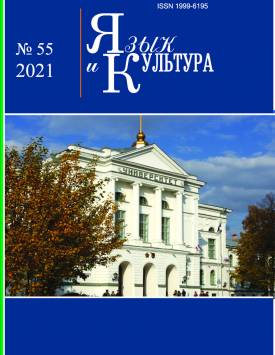Using the technology of blended learning in teaching students from China English and Russian languages
COVID-19 pandemic has impacted a higher education sector on a global scale. In general, the pandemic has affected the internationalization of higher education, as most universities have faced the issues of organizing logistics and providing the educational process for foreign students, who stay in the country of studying during the pandemic and(or) return home. Universities have focused on finding new forms of attracting foreign students and organizing training for them, so there was a reconsideration of work with foreign partners on the development and implementation of joint educational programs. The Federal State Educational Standard of Higher Education has fixed the requirement for the use of interactive and active methods in the educational process. The concept of ‘blended learning' is gaining popularity with the transition of universities to online education, and relevant research is deepening. ‘Blended learning' is considered as one of the most popular and effective technologies in learning a foreign language and allows to plan teachers' and students' time as efficiently as possible, make the language learning process exciting and accessible, develop nonspecialized skills, which include critical thinking, teamwork, creativity and many others. Today, ‘blended learning' is one of the key competitive advantages of higher education institutions. The article defines ‘blended learning' essence and structure, identifies the difficulties of teaching students from China while teaching English and Russian, and also offers some methods of implementing ‘blended learning'. In a higher education system, blended learning is understood as a form of education in which training is conducted in both the traditional fulltime form and using distance-learning technologies. English is not a native language for both sides of the learning process neither for the student nor for the teacher, what complicates the learning process. There is a difficult question of taught language material authenticity and teacher's appropriate behavior model becomes relevant. The problem of finding effective approaches to learning becomes acute in a situation of interaction of languages and cultures, in other words, the implementation of intercultural communication, when there is no a single intermediary language. The peculiarities of the mentality of representatives of the root - isolating languages, the traditions of the Far Eastern culture in relation to education create additional difficulties in communication between foreign students and Russian teachers. It is necessary not only to rely on linguistic and cultural traditions to adjust Chinese students' motivation in learning English, but using traditional and innovative methodological tools. To build a successful process of teaching Chinese students a foreign language (English and Russian), it is compulsory to determine their level of foreign language proficiency. It is recommended to use students' native language of when teaching, in particular, English. This principle means to teach students with the fullest possible consideration of the characteristics of the native language of students. It is considered, that to identify the main difficulties in memorizing educational material for each contingent of students is possible only as a result of comparing the corresponding phenomena in two languages. The most effective teaching aids are materials based on a scientific description of the language to be studied, carefully compared with a parallel description of the students ' native language. If students know the Russian language, it would be possible to use it to understand English better. The teacher can focus on the same words that occur in both Russian and English languages to learn new material faster. Russian and English language comparison methods can be used to convey new information to students more effectively, as it will be based on existing knowledge of the Russian language. This article presents the experience of implementing ‘blended learning' technology when teaching students from China English and Russian languages. The authors of the article define ‘blended learning' technology, describe the methodology of teaching foreign students Russian and English languages, identify the role of the center for open education ‘Pushkin Center' when working with foreign students from China studying Russian, and also analyze the results of a study to identify the effectiveness of the use of mixed learning technology. The parameters of students' study and survey were the following: interest in the language being studied, communication skills improvement, increase in vocabulary, knowledge expansion about the country of the language being studied, strengthening of reading activity, phonetic skills improvement, grammatical skills improvement.
Keywords
‘blended learning' technology, foreign students, English, Russian, distance learningAuthors
| Name | Organization | |
| Vertyanova A.S. | Perm State Humanitarian Pedagogical University | ibo-perm@yandex.ru |
| Arziutova S.N. | Perm State Humanitarian Pedagogical University | swetta912588@yandex.ru |
| Ermoshina M.A. | Perm State Humanitarian Pedagogical University | maya.petrovich@mail.ru |
References

Using the technology of blended learning in teaching students from China English and Russian languages | Yazyk i Kultura – Language and Culture. 2021. № 55. DOI: 10.17223/19996195/55/12
